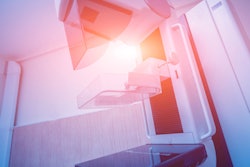Dear Women's Imaging Insider,
It can be challenging to implement contrast-enhanced mammography (CEM). But if your practice is ready to take the plunge, the experience of the University of Pittsburgh Medical Center (UPMC) could be helpful.
In a presentation at the annual meeting of the AHRA this week in Indianapolis, LaJuana Fuller from the UPMC-Magee Womens Hospital talked about how she and colleagues successfully developed and implemented a protocol centered on diagnostic CEM in UPMC hospitals as an alternative to breast MRI. Find out how the team made this happen in this edition's Insider Exclusive.
Speaking of CEM, research led by a UPMC group found that overall, women prefer undergoing this examination over breast MRI. Read what factors swayed surveyed women to join team CEM.
In other news, Chinese researchers reported that an AI algorithm, including data from an MR imaging biomarker called intratumoral heterogeneity, helps with the prediction of treatment response to chemotherapy for breast cancer.
Finally, about half of women who visit emergency departments or urgent care centers are not up to date on mammography screening, a University of Wisconsin team found. They also reported that historically underserved groups are more susceptible to not receiving their annual mammogram.
Plus, check out more of our Women's Imaging coverage:
- Dutch researchers found through functional MRI that prenatal maternal anxiety has a long-term negative impact on the children of women with the condition.
- Chinese researchers reported success for a deep-learning model that uses CT images to predict neoadjuvant chemotherapy response in high-grade serous ovarian cancer.
- Research presented at the Society of Nuclear Medicine and Molecular Imaging (SNMMI) annual meeting in Chicago showed the potential of PET imaging for new breast cancer therapies.
- A South Korean team found that locoregional breast cancer recurrence appears in different patterns according to cancer subtypes, pointing to the need for tailored breast imaging surveillance.
Find more articles like these by regularly visiting your Women's Imaging community!




















